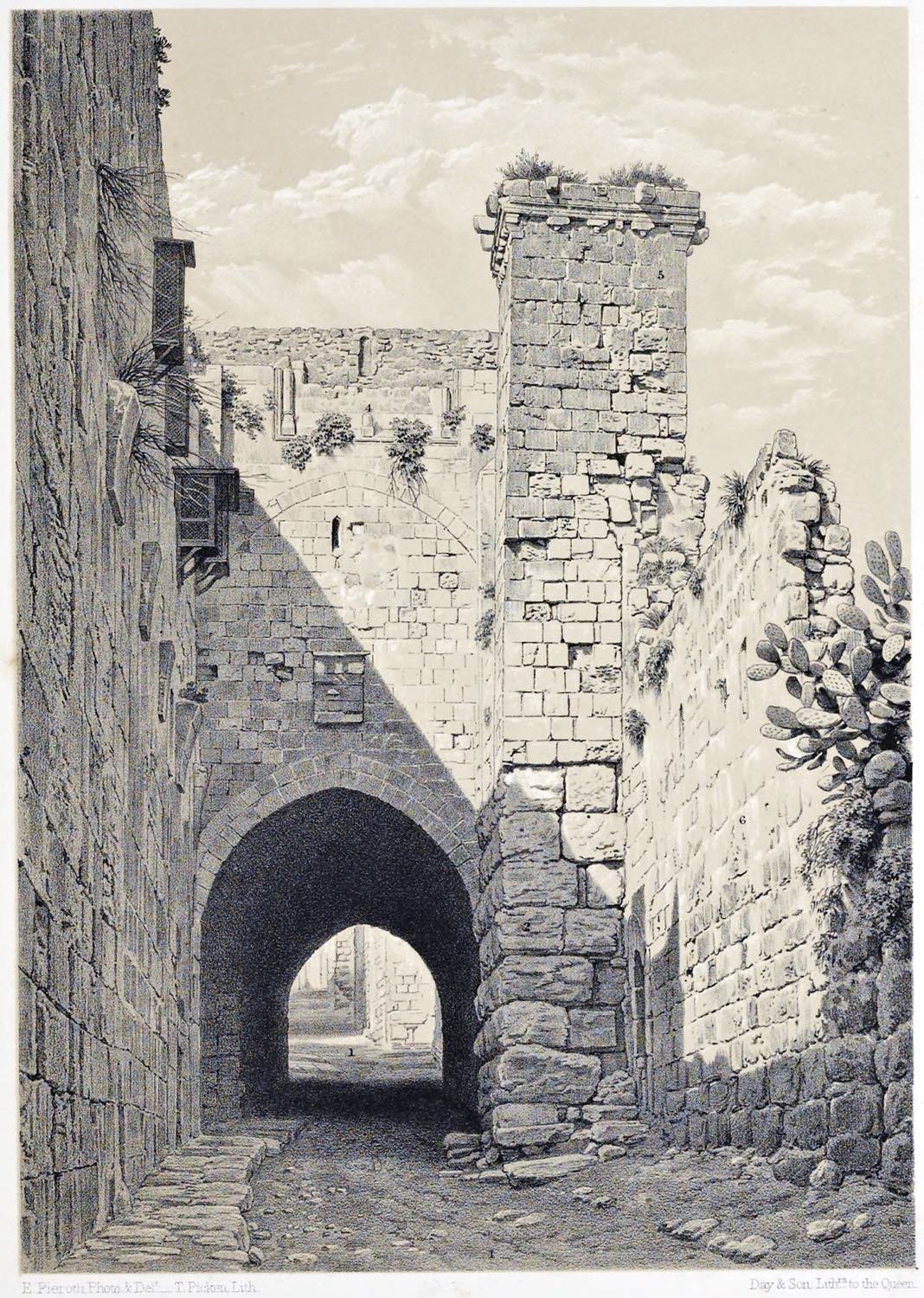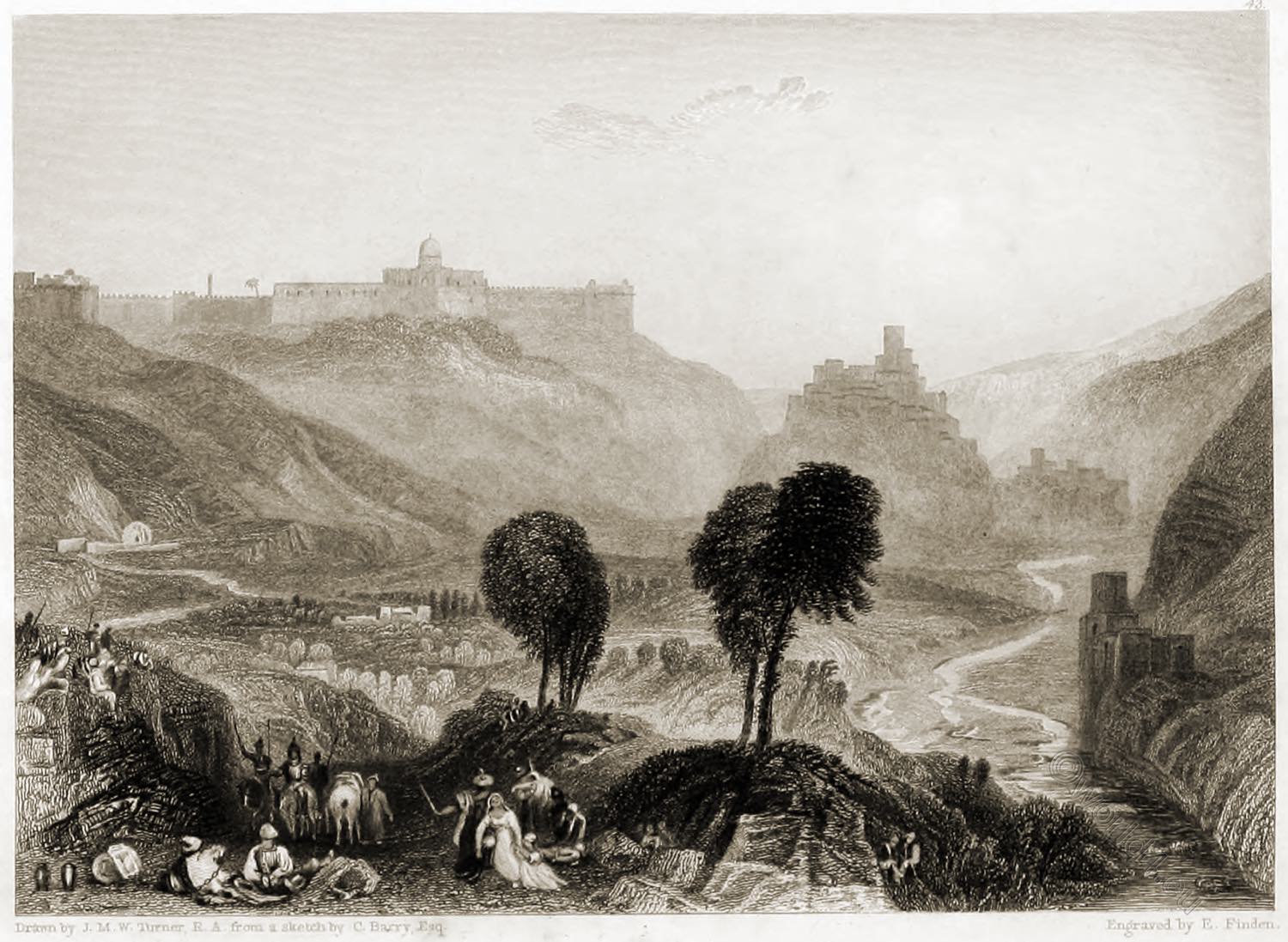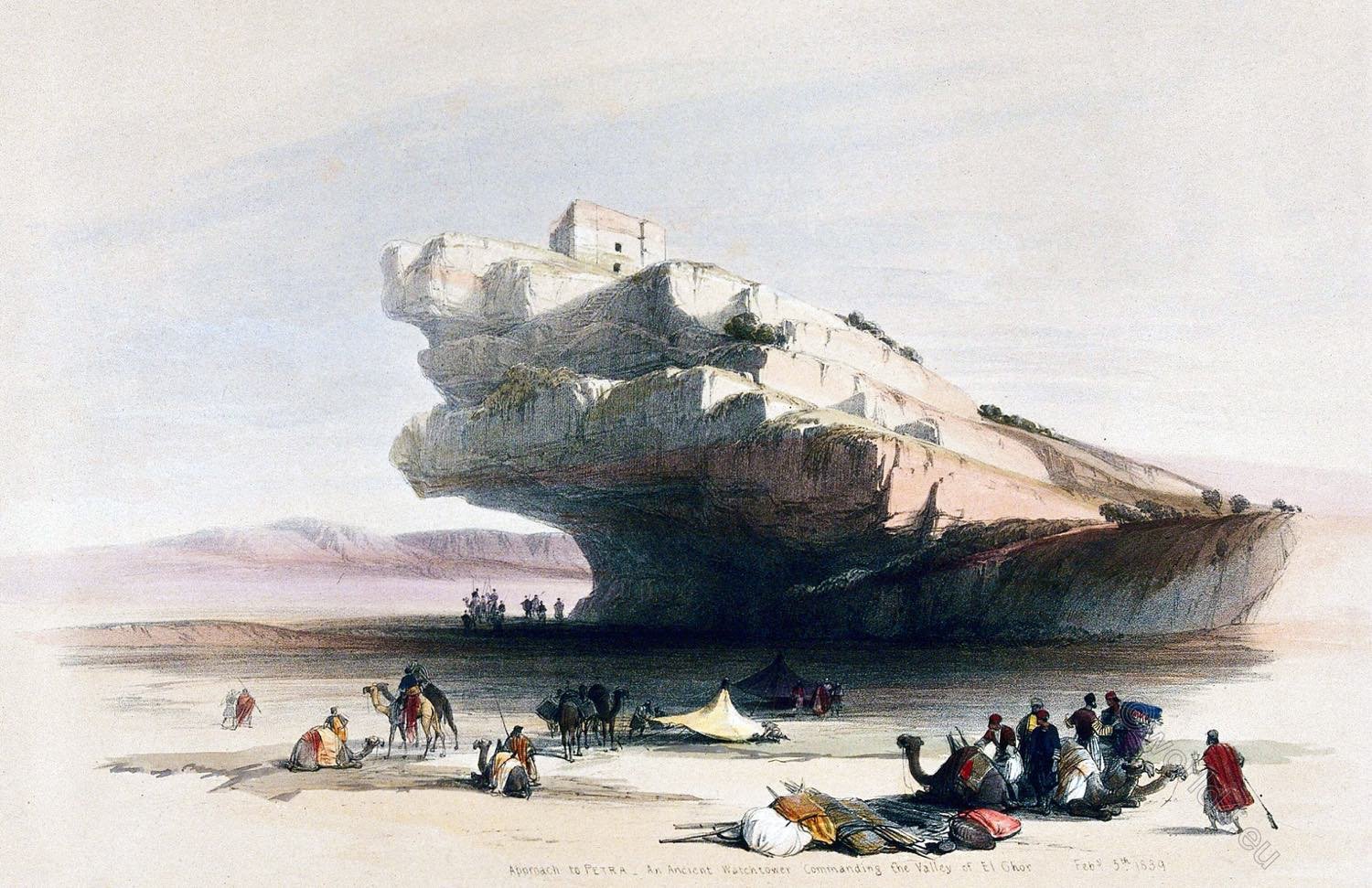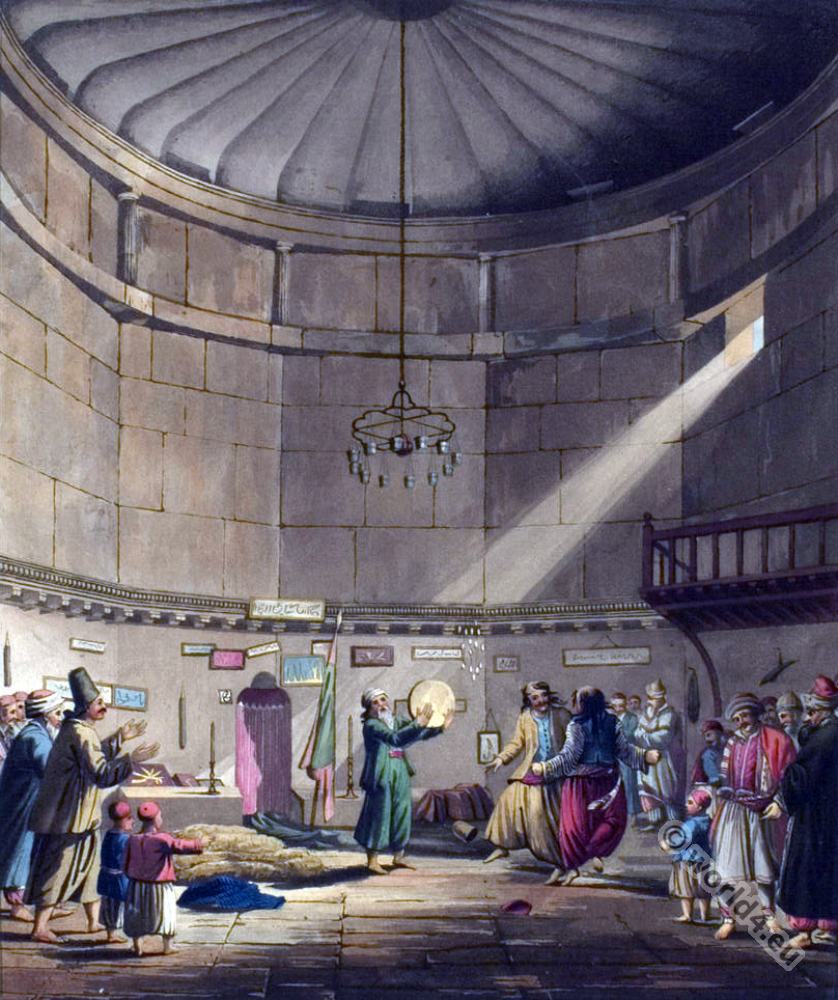
PLATE XV.
REMAINS OF ANCIENT MASONRY, CALLED THE RUINS OF THE TOWER ANTONIA.
- Via Dolorosa.
- Masonry of the Jewish period.
- House of the period of the Crusades.
- Saracenic Window.
- Tower of the Ancient Arab period.
- Common Arab wall.
The Antonia fortress, or Antonia tower, was a building near the northern side of the temple in Jerusalem, located at a crucial point for the defence of Jerusalem, since almost all attacks on Jerusalem came from the north. In addition, it was from Antonia that events in the Temple Square could be controlled. It was the seat of the Roman garrison that controlled the city. The Roman procurator of Judea resided there when he was in Jerusalem, but ordinarily he resided in Caesarea Maritime.
Antonia Castle rose on a 25-metre-high rock plateau measuring 150 × 90 metres. Four massive towers reinforced the corners. Each of them was 25 metres high, the south-east tower even 35 metres. Externally, Antonia Castle was a strong fortress; internally, it was a palace with representation and living quarters, baths, barracks and arsenals.
Christian tradition sees Antonia Castle as the place where Jesus Christ is said to have been sentenced to death by Pontius Pilate. Whether the sentence was actually passed in Antonia Castle is questionable.
The term praetorium (Jn 18:28) is more likely to refer to the former royal palace on the western hill. In view of the Passover and the feared uproar in Jerusalem, however, it is quite possible that Pilate carried out the interrogation and condemnation in the strongly fortified Antonia Castle.
After this place had not been associated with the trial of Jesus for more than 1100 years, this happened for the first time with Theodericus, who correctly located Antonia in 1172, following the information in Josephus. An anonymous author identified the Antonia with Pilate’s official residence around 1180. In the Crusader period, a small domed building was built as a memorial site, the “Chapel of Rest”, which Ernoul explained thus: “There, they say, Christ rested when he was led to crucifixion…”
That is why the Way of the Cross (Via Dolorosa) of the Crusaders began here and led over the Temple Mount to the Church of the Holy Sepulchre.
Source: Jerusalem Explored. Being a description of the ancient and modern city, with numerous illustrations consisting of views, ground plans, and sections by Ermete Pierotti; translated by Thomas George Bonney (Fellow of St Johns College, Cambridge). London: Bell and Daldy; Cambridge: Deighton, Bell and Co. 1864.
Continuing
Discover more from World4 Costume Culture History
Subscribe to get the latest posts sent to your email.






